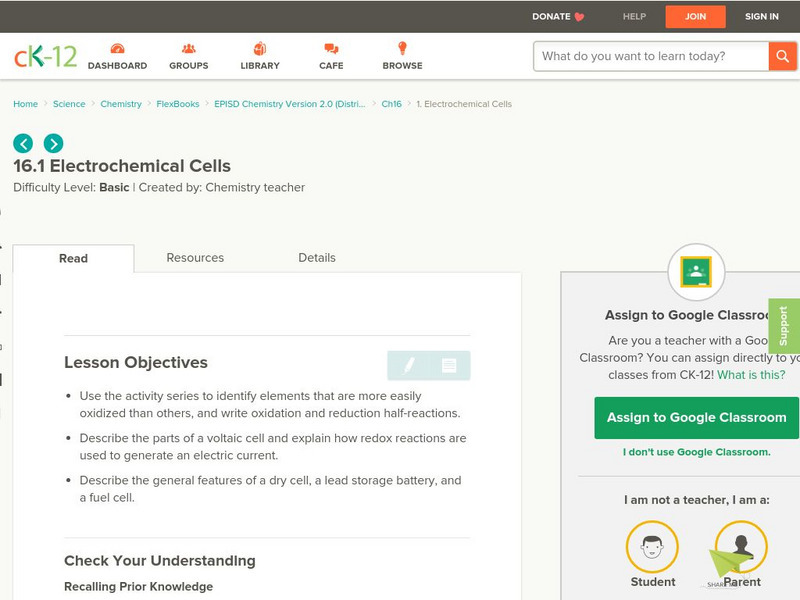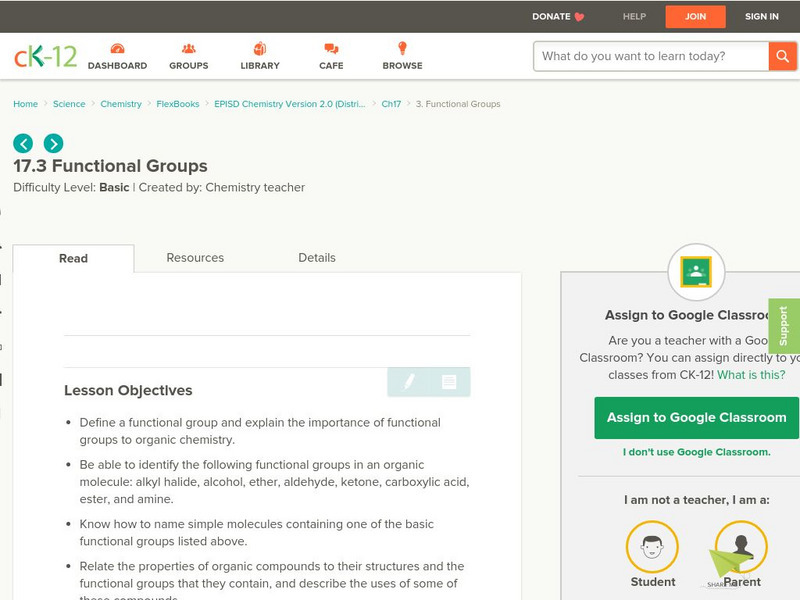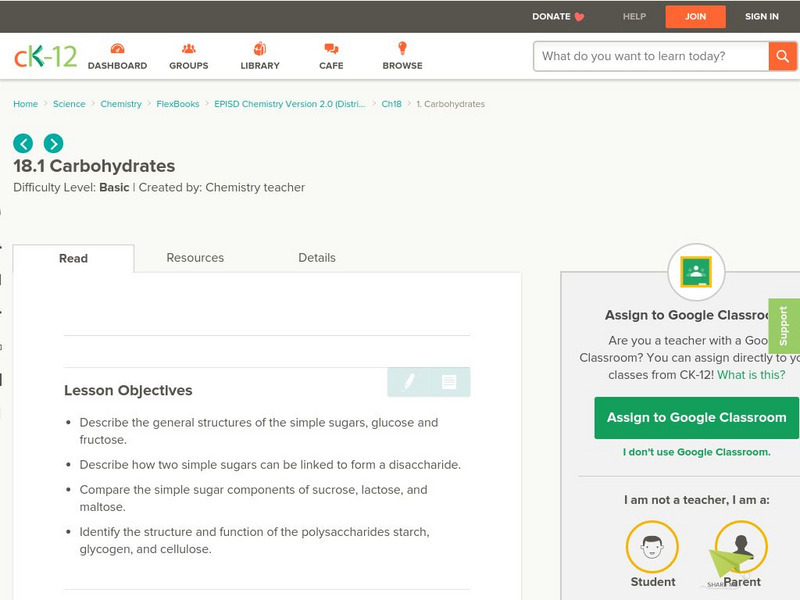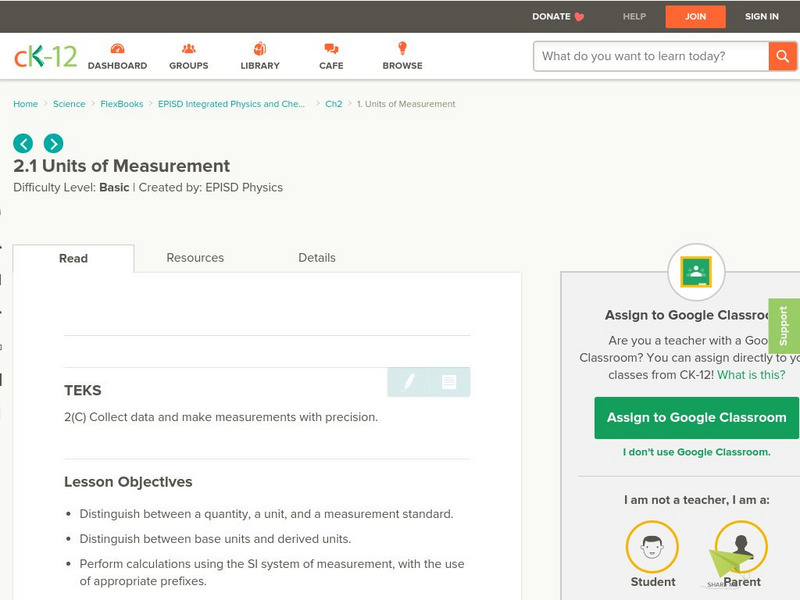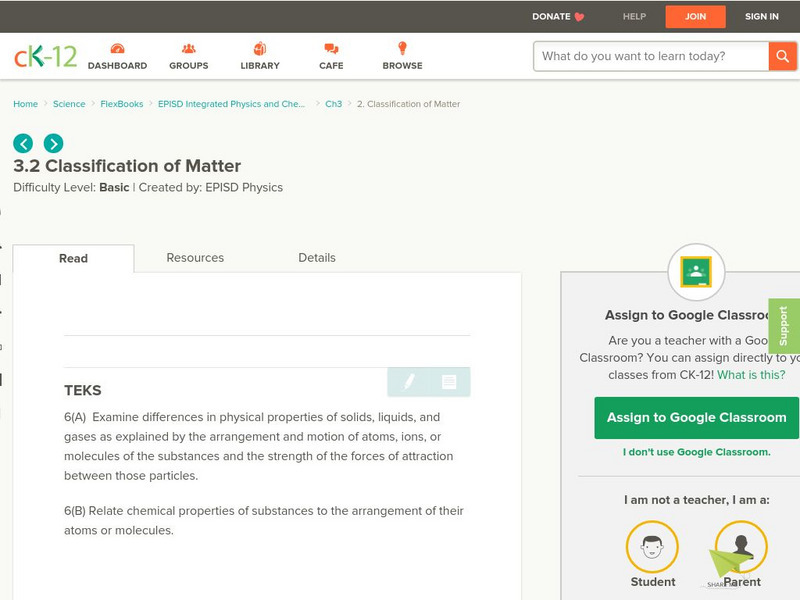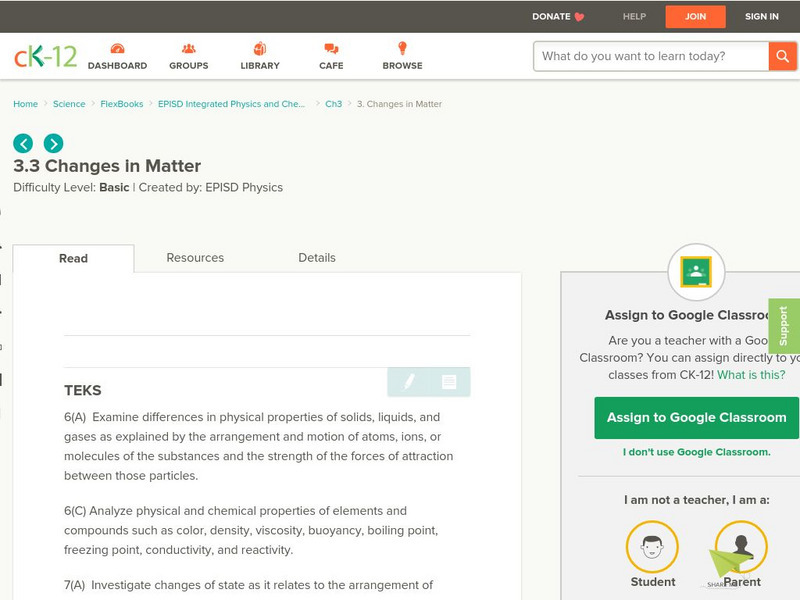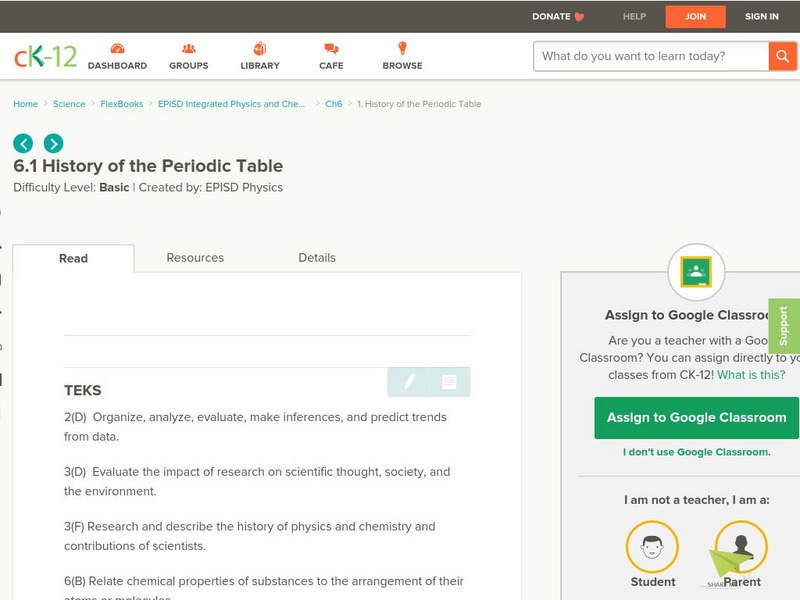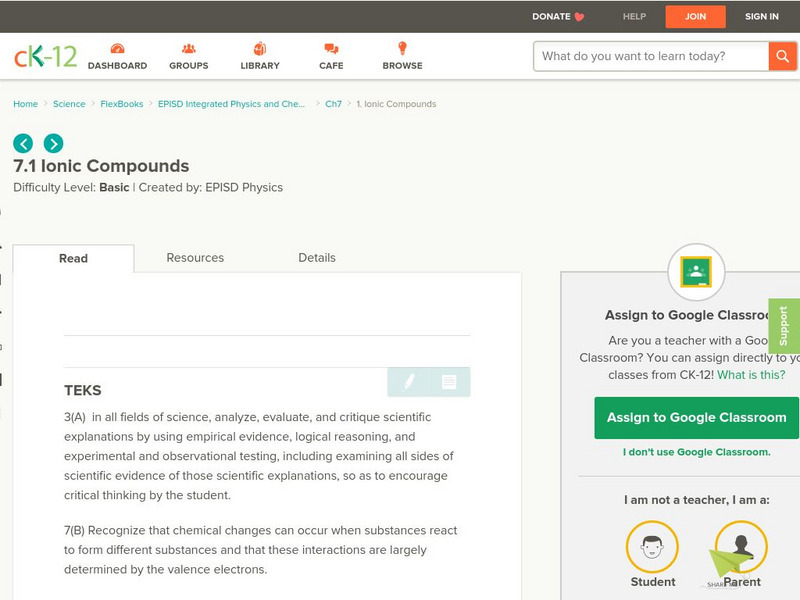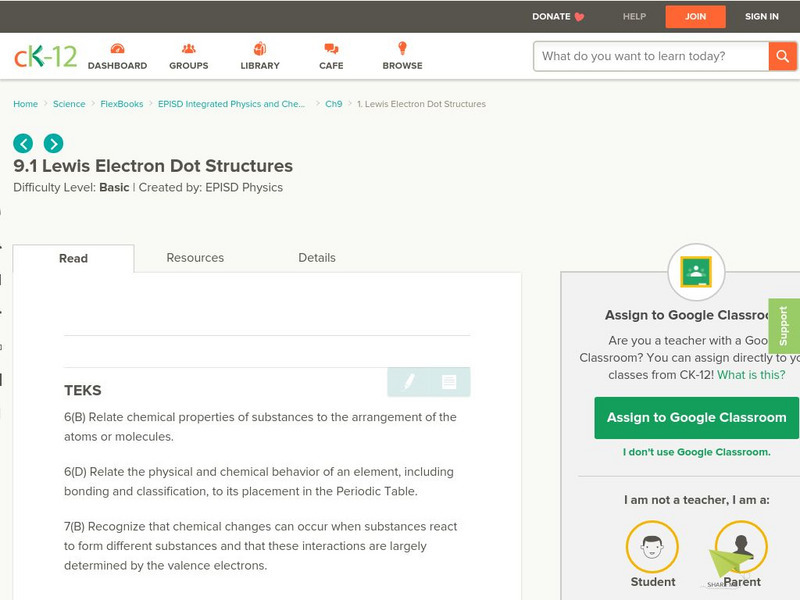CK-12 Foundation
Ck 12: Electrochemical Cells
[Free Registration/Login may be required to access all resource tools.] Students use the activity series to identify elements that are more easily oxidized than others, and write oxidation and reduction half-reactions. Then, they...
CK-12 Foundation
Ck 12: Electrolysis
[Free Registration/Login may be required to access all resource tools.] Students investigate voltaic and electrolytic cells describing the reactions that occur during the electrolysis of water. They also identify the products that would...
CK-12 Foundation
Ck 12: Hydrocarbons
[Free Registration/Login may be required to access all resource tools.] In this module, students investigate and explore the bonding characteristics of carbon that lead to such a large number of organic compounds.
CK-12 Foundation
Ck 12: Hydrocarbon Rings
[Free Registration/Login may be required to access all resource tools.] In this module, students will explore cyclic hydrocarbons, and explain how ring strain contributes to the shape of cyclic hydrocarbons. They will also name and write...
CK-12 Foundation
Ck 12: Functional Groups
[Free Registration/Login may be required to access all resource tools.] In this module, students explore functional groups and their importance to organic chemistry. They relate the properties of organic compounds to their structures and...
CK-12 Foundation
Ck 12: Organic Reactions
[Free Registration/Login may be required to access all resource tools.] Students distinguish between substitution reactions and addition reactions, and relate the concepts of oxidation and reduction to organic reactions.
CK-12 Foundation
Ck 12: Carbohydrates
[Free Registration/Login may be required to access all resource tools.] Students investigate the general structures of the simple sugars, glucose and fructose, and find out how two simple sugars can be linked to form a disaccharide. They...
CK-12 Foundation
Ck 12: Lipids
[Free Registration/Login may be required to access all resource tools.] Students discover the structure of a triglyceride and distinguish between saturated and unsaturated fats. They also investigate structure of a phospholipid and a...
CK-12 Foundation
Ck 12: Nucleic Acids
[Free Registration/Login may be required to access all resource tools.] In ths module, discover the structure of a single nucleotide and how that structure leads to the overall structure of DNA and RNA.
CK-12 Foundation
Ck 12: What Is Chemistry?
[Free Registration/Login may be required to access all resource tools.] Students find out about the history of chemistry, from the rise and fall of the alchemists to modern day implications of the use of chemicals and technology.
CK-12 Foundation
Ck 12: The Scientific Method
[Free Registration/Login may be required to access all resource tools.] In this module, students study science and understand that it has limitations. Students also explore the scientific method and investigative procedures stemming from...
CK-12 Foundation
Ck 12: Units of Measurement
[Free Registration/Login may be required to access all resource tools.] Students explore the scientific implications of measurement, and learn about system international metrics, dimensional analysis, scientific notation, and more.
CK-12 Foundation
Ck 12: Classification of Matter
[Free Registration/Login may be required to access all resource tools.] Students will use the physical and chemical properties of matter to categorize the various forms of matter.
CK-12 Foundation
Ck 12: Changes in Matter
[Free Registration/Login may be required to access all resource tools.] Students will describe methods for separating mixtures, such as chromatography, distillation, fractional distillation, evaporation, and filtration. They will also...
CK-12 Foundation
Ck 12: Structure of the Atom
[Free Registration/Login may be required to access all resource tools.] Students learn about the important discoveries of subatomic particles, and how they led to our current understanding of the atom.
CK-12 Foundation
Ck 12: Electron Arrangement in Atoms
[Free Registration/Login may be required to access all resource tools.] The focus in this learning module will be on the complexity of electron arrangement in atoms.
CK-12 Foundation
Ck 12: History of the Periodic Table
[Free Registration/Login may be required to access all resource tools.] Students explore the history of the periodic table, and explain how the periodic table was originally organized, compared to the arrangement of the modern periodic...
CK-12 Foundation
Ck 12: Trends in the Periodic Table
[Free Registration/Login may be required to access all resource tools.] Students investigate specific properties that can be predicted by an element's position on the periodic table. Additionally, they will look at the formation of ions,...
CK-12 Foundation
Ck 12: Ionic Compounds
[Free Registration/Login may be required to access all resource tools.] Students investigate ionic compounds, and learn how to write chemical formulas for them.
CK-12 Foundation
Ck 12: Molecular Compounds
[Free Registration/Login may be required to access all resource tools.] Students investigate compounds, and learn the ways in which molecules are named.
CK-12 Foundation
Ck 12: Acids and Bases
[Free Registration/Login may be required to access all resource tools.] In this learning module, students investigate the different chemical and physical properties of acids and bases.
CK-12 Foundation
Ck 12: Ionic Bonds and Ionic Compounds
[Free Registration/Login may be required to access all resource tools.] Students will understand the general properties that distinguish ionic compounds from other substances, and predict which elements are likely to form ionic compounds...
CK-12 Foundation
Ck 12: Metals and Metallic Bonds
[Free Registration/Login may be required to access all resource tools.] Students investigate the physical and chemical properties of metals and metallic bonds.
CK-12 Foundation
Ck 12: Lewis Electron Dot Structures
[Free Registration/Login may be required to access all resource tools.] Students will use their knowledge of covalent bonds, and apply that to drawing Lewis dot structures to represent compounds.
